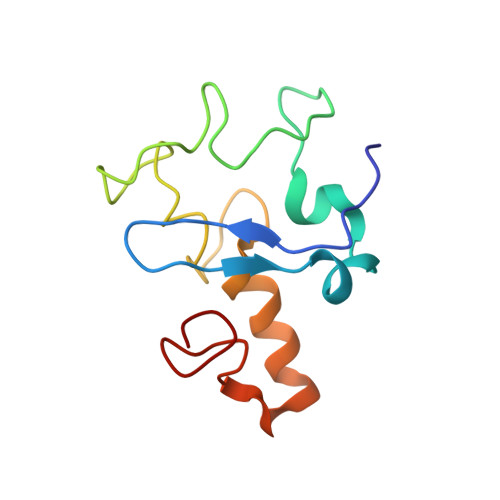Redox linked conformational changes in cytochrome c3 from Desulfovibrio desulfuricans ATCC 27774
Paixao, V.B., Vis, H., Turner, D.L.(2010) Biochemistry 49: 9620-9629
- PubMed: 20886839
- DOI: https://doi.org/10.1021/bi101237w
- Primary Citation of Related Structures:
2KMY, 2KSU - PubMed Abstract:
Cytochrome c3 from Desulfovibrio desulfuricans ATCC 27774 appears to be capable of receiving two protons and two electrons from hydrogenase for transport to the membrane, and converting electronic energy into proton motive force. Detailed studies of the mechanism require control both of the redox state and of the protonation state of the protein; hence, structure determination of the protein in solution by NMR is the preferred method. This work compares the structures of the protonated protein in the fully oxidized and fully reduced states as a first step toward elucidating the pH-dependent and redox-state-dependent conformational changes that drive the energy transduction. These high-resolution structures revealed significant localized differences upon change of redox state, even though the global folds of the two families of structures are similar. There are concerted redox-linked motions within the protein that bring E61 and K75 closer to heme II in the oxidized form. This is consistent with an electrostatically driven movement that may provide an important contribution to the previously measured positive cooperativity between hemes I and II. No significant conformational changes were observed that might be related to redox−Bohr effects; the families of structures represent mainly protonated forms, and therefore, pH dependence should not play a major role in the observed structural rearrangements.
Organizational Affiliation:
Instituto de Tecnologia Química e Biológica, Universidade Nova de Lisboa, Oeiras, Portugal.















